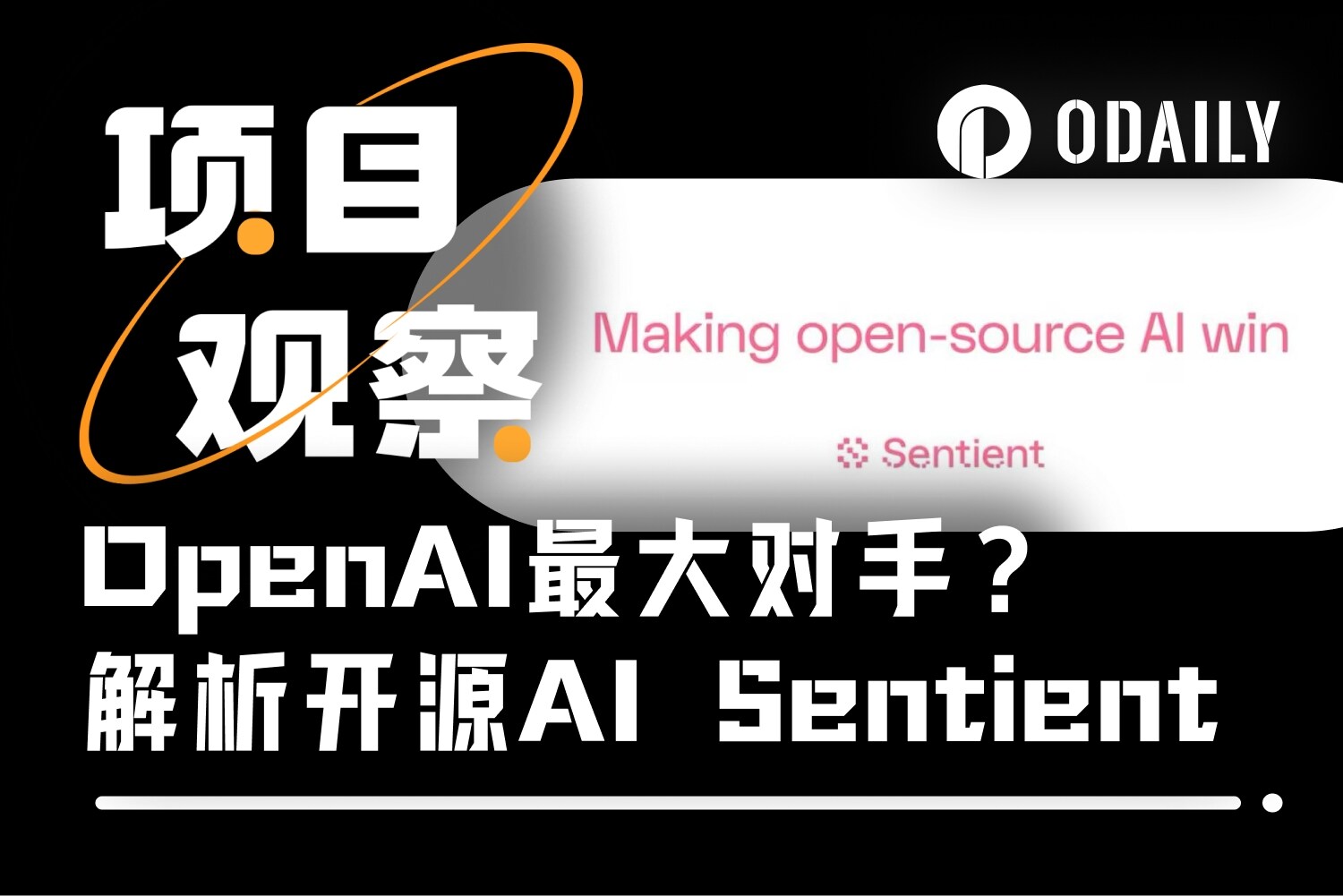Placeholder Partner: Modularity will bring a golden age of Web3 innovation
Original author: Joel Monegro, Partner at Placeholder
Original compilation: Luffy, Foresight News
Pioneers of new technologies must raise large amounts of capital to build infrastructure, which can lead to overinvestment and speculative bubbles. When these bubbles burst, weak businesses fail and market forces consolidate around industry leaders and their paradigms. Through this integration process, we can identify common elements in the application and separate them into standard modular components that can be open sourced or sold as separate services. These abstracted components make it easier to build more complex applications and enable a shift in cost structures from capex-led to opex-driven, allowing new products to be introduced faster and with lower startup costs. This model is now unfolding in the emerging Web3, where new modular technologies (such as Rollups) accelerate technology development and usher in an era of lean startup innovation.
Capital Expenditure vs. Operating Expenditure
As technology infrastructure becomes more standardized and widely available, it becomes more powerful and easier to use. But before that happened, early entrepreneurs had to invest heavily in building their own infrastructure before they could build and distribute their own applications, such as Edison inventing the electrical grid to help sell light bulbs or early internet startups deploying data centers to run web pages. As the market matures, the emergence of open standards and on-demand infrastructure services provides more efficient business models for companies that adopt them, because they do not need to spend as much time and money to bring products to market.
For example, after the Internet bubble burst in 2000, the Internet industry shifted from purchasing servers and building data centers (capital expenditure) to renting cloud servers (operating expenditure). Many open source frameworks (such as the LAMP stack, Ruby on Rails, Django, and NodeJS) emerged to simplify web development, while industry leaders such as Microsoft, Amazon, and Google used their scale to establish new standards and low-cost infrastructure services. This, along with the API boom that began in the late 2000s, further simplified the complexity of the Internet by providing specialized backend functionality under a pay-as-you-go business model. Within a decade of the crash, these abstraction layers enabled small teams to build and scale new applications quickly and cheaply, and startups accelerated innovation and ushered in a golden age.
Web2 infrastructure has become so abstract that modern web applications dont even run directly on physical servers, but on simulations of servers: virtual machines (often packaged in containers) that can be used in many environments with minimal reconfiguration. Easily move or copy). Virtual machine technology helps scale Web2 by allowing a single powerful server to run multiple applications simultaneously, and computing resources can be easily added or subtracted to applications as needed to meet demand and control costs.
The concept of virtualization illustrates how abstract infrastructure can become, but I emphasize it here because Web3 infrastructure follows a similar path to the invention of Rollup, which also did so by allowing blockchains to support multiple virtual blockchains on top. ” to help the blockchain achieve expansion.
abstraction layer
Early blockchain startups must build all the infrastructure, including custom blockchain protocols, front-ends, wallets, SDKs, APIs, etc., before they can start building applications. Smart contract networks like Ethereum reduce the need to build proprietary blockchains for many applications, but they impose significant constraints on cost, programming conventions, and scalability, limiting the range of possible applications. More ambitious ideas require a level of flexibility and throughput that is often difficult to achieve on public chains, so many of the most exciting applications cannot be put into practice.
Platforms like Cosmos and Polkadot later provided tools to create custom blockchains with shared security and interoperability features, making it easier and more secure to launch blockchains. However, using them still requires significant resources and expertise, so they remain out of reach for most developers. But just as more abstraction layers simplify cloud services, emerging Layer 2 (L2) standards such as Rollup allow developers to quickly and cheaply deploy blockchain environments.
Rollup executes transactions and smart contracts off-chain and bundles the results of multiple operations into periodic, cryptographically verifiable transactions on the main blockchain, thereby inheriting the security of the underlying network. This is similar to how credit card networks process many payments and settle merchants via weekly batch wire transfers. Through this technology, a single blockchain can simultaneously secure many high-performance virtual blockchains, significantly increasing network throughput while minimizing transaction fees.
Importantly, Rollup is not a blockchain, at least no more than virtual machines, they are not actual machines. Rollup is a virtual blockchain and a simulation environment. If abstraction is ignored, smart contracts in Rollup run just like on the real blockchain. Rollup can be centralized based on performance, control or compliance needs as long as operators regularly settle outputs on a trusted blockchain and do not corrupt data. But it can also be decentralized by using shared orderer technology.
In addition to scalability, by separating the execution layer from the data availability, settlement and consensus layers, developers gain flexibility while leveraging the security of the main chain. For example, if a developer doesnt like Solidity but wants to take advantage of Ethereums security or ecosystem, he can choose to deploy his application to Ethereum using Rollup using Python as the programming language. Open source frameworks such as OP Stack, ZK Stack, Polygon CDK, Arbitrum Orbit or Rollkit already enable developers to easily deploy custom Rollups with different trust levels, while decentralized sorter projects like Espresso and Astria provide implementation Layer decentralization options if you need them. At the same time, a growing number of low-code “Rollup as a Service” (RaaS) products, such as Dymension, Conduit, Caldera and Gelato, allow anyone to launch a custom virtual blockchain in minutes.
The broader “modularity movement” further reduces the cost of building and scaling blockchain applications by providing developers with standards and services covering other areas of the stack. Ethereums EVM dominates as the operating system for smart contracts, while Solanas SVM is rapidly emerging as a high-performance alternative (both can be used in standalone Rollups). Protocols such as POKT standardize the RPC/API layer across networks, while frameworks such as SyndicatePolywrap abstract multiple protocols into a single front-end SDK; cross-chain bridges such as Across enable liquidity to flow between different blockchain networks, while SAFE or Squads The addition of “wallet as a service” (WaaS) companies such as Magic allows users on any chain to easily create custom wallets. There are even new L1s like Celestia built specifically for virtual blockchain environments.
Millions of virtual blockchains
The current strategy for Web3 startups is to launch first on a high-performance, low-cost network such as Ethereum L2 or Solana, and then start planning to move to a custom, application-specific runtime environment if scale is required. Even existing protocols that have built their own chains, such as Celo or POKT, are transitioning to L2 architecture to simplify infrastructure costs, echoing an era when Internet companies with data centers had to adopt cloud services. If you dont embrace new things, youll be easily defeated by competitors who do.
Many people believe that applications running on high-throughput blockchains such as Solana can achieve web scale without the need for L2, but people greatly underestimate the implications of network scale because most of the activity on the Internet occurs in the background. Every click you make triggers hundreds of hidden HTTP requests; just loading Twitter.com triggers over 300 background requests to various APIs and service providers in 2 seconds, and thats just a single action by a user. Achieving web scale might mean processing millions of transactions per second per application, but if demand on the internet side increases by a million, thats not nearly enough. To achieve this level of scale, virtualization is necessary, but we also need ultra-high performance L1 underneath to achieve it. In addition to blockchains optimized for data availability throughput (such as Celestia), high-performance blockchains (such as Solana and Monad) are potentially interesting rollup playgrounds.
That said, scalability isn’t the only reason why virtual blockchains are important. Virtual blockchain is a powerful standard for online services in the Web3 era. The first wave of Rollup mainly consists of faster Ethereum services. However, the flexibility provided by modular architecture makes virtual blockchains particularly useful for creating application-specific operating environments or networks tailored for specific ecosystems, industries, or geographies. You can also create virtual private blockchains for use cases with strict access control or compliance requirements. The bigger idea is that as blockchain and smart contract interfaces replace the cloud services and API paradigm of Web2, virtual blockchains may become the default backend infrastructure for all online applications.
We will explore these ideas in more depth in future articles, but the most important point I want to emphasize from a business perspective is that modularity represents a shift from CapEx to OpEx for Web3, and as such, we can expect the next generation of Rapid scaling of blockchain applications. Opex means costs scale with growth, rather than being borne up front through large-scale financing before launch. This means entrepreneurs can iterate faster, applications can scale cheaply, and investors can finance businesses with less risk. Just like Web2 after the dot-com bust, these are the first prerequisites for a golden age of innovation for Web3 startups.



